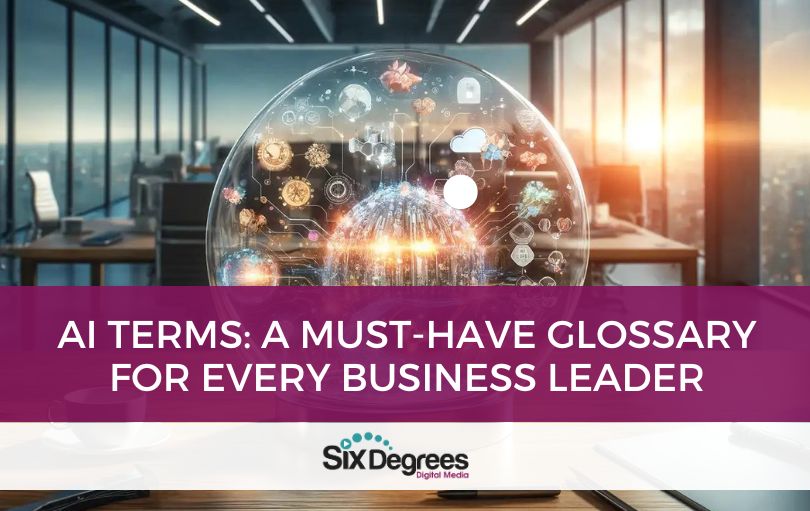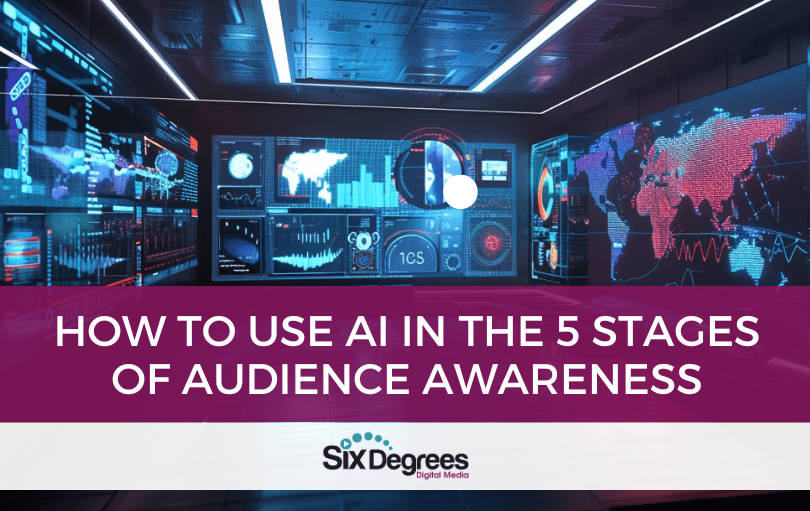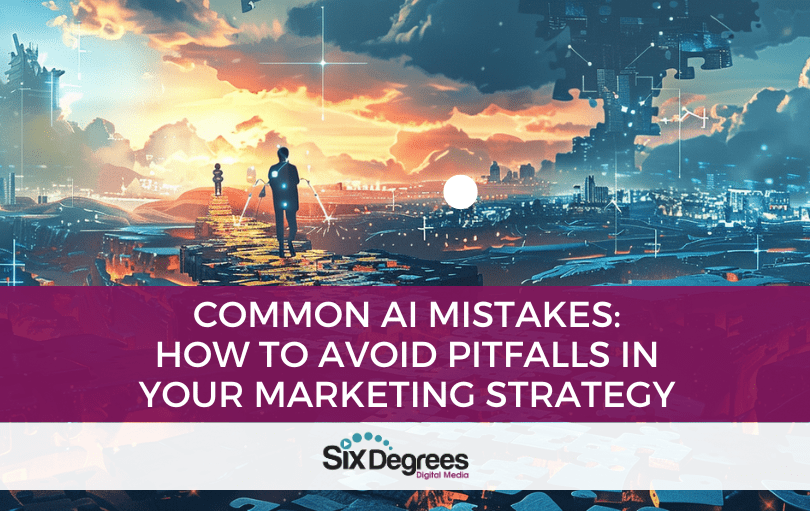
Navigating the maze of artificial intelligence (AI) can feel like decoding a foreign language, especially when you’re juggling a hundred other tasks, aiming to give your business that competitive edge. You’ve heard the buzzwords, seen the potential for transformative growth, and you’re eager to dive in. Yet, there’s a gap between interest and implementation, a haze of terminology that seems just out of grasp.
You’re not alone in this. Many business leaders share this sentiment. The world of AI is huge and often feels like uncharted territory. Where do you even begin?
Here’s a beacon of clarity: a glossary designed not just to define terms but to demystify them, making AI not only accessible but actionable for your business. This isn’t about overwhelming you with jargon or abstract concepts detached from their real-world impact. It’s about presenting AI as it should be—a tool within reach, ready to solve your most pressing challenges, from streamlining operations to unlocking new avenues for customer engagement.
So, let’s get started. By understanding the language of AI, you’ll be equipped to ask the right questions, make informed decisions, leverage AI for your business’s unique needs and aspirations. After all, the future of your company isn’t just about adopting new technologies—it’s about understanding them well enough to drive real, meaningful growth.
AI Glossary
Fundamental Concepts
Artificial Intelligence (AI):
The simulation of human intelligence processes by machines, especially computer systems. These processes include learning, reasoning, and self-correction.
Business Application: Automates routine tasks, enhances decision-making, and drives innovation.
Machine Learning (ML):
A subset of AI that allows software applications to become more accurate in predicting outcomes without being explicitly programmed.
Business Application: Optimizes operations, personalizes customer experiences, and improves predictive maintenance.
Deep Learning:
An ML technique that teaches computers to do what comes naturally to humans: learn by example, using neural networks with many layers.
Business Application: Enables advanced applications like speech and image recognition, contributing to more intuitive customer interfaces.
Algorithm:
A set of rules or instructions given to an AI system to help it learn from data and make decisions.
Business Application: Powers data analysis and decision-making processes, optimizing both customer-facing and operational efficiencies.
Big Data:
Extremely large data sets that may be analyzed computationally to reveal patterns, trends, and associations.
Business Application: Drives strategic decision-making by uncovering insights into consumer behavior and operational inefficiencies.
Technologies and Applications
Natural Language Processing (NLP):
The ability of a computer program to understand human language as it is spoken and written.
Business Application: Powers chatbots and virtual assistants, enhancing customer service and engagement.
Computer Vision:
The field of AI that enables computers and systems to derive meaningful information from digital images, videos, and other visual inputs.
Business Application: Facilitates quality inspection, security surveillance, and interactive marketing experiences.
Robotic Process Automation (RPA):
The technology that allows anyone to configure computer software, or a “robot,” to emulate and integrate the actions of a human interacting within digital systems.
Business Application: Automates business processes like data entry, processing transactions, and responding to customer queries.
Chatbot:
An AI software that can simulate a conversation (or a chat) with a user in natural language through messaging applications, websites, mobile apps, or through the telephone.
Business Application: Enhances customer service and engagement through 24/7 assistance and personalized communication.
Autonomous Vehicles:
Vehicles capable of sensing their environment and moving safely with little or no human input.
Business Application: Transforms logistics and delivery services, reducing costs and improving safety and efficiency.
Smart Robots:
Robots that can operate autonomously or semi-autonomously in complex, changing environments thanks to AI.
Business Application: Improves manufacturing processes, healthcare services, and customer interactions in retail.
Augmented Reality (AR) & Virtual Reality (VR):
Technologies that create immersive digital experiences, with AR enhancing the real world with digital overlays and VR creating completely virtual environments.
Business Application: Offers unique customer experiences, enhances training and simulation exercises, and innovates product demonstrations.
Advanced Methodologies
Neural Networks:
Computational models inspired by the human brain’s structure and function, used in machine learning to analyze data and recognize patterns.
Business Application: Forms the basis for complex decision-making systems, including credit scoring and customer segmentation.
Supervised Learning:
A machine learning approach where the model is trained on a labeled dataset, meaning it learns from examples that have an input-output pair.
Business Application: Ideal for predictive modeling and forecasting customer behavior, sales trends, and inventory demand.
Unsupervised Learning:
A type of machine learning that looks for previously undetected patterns in a dataset with no pre-existing labels and with a minimum of human supervision.
Business Application: Useful in customer segmentation, market basket analysis, and anomaly detection in network security.
Reinforcement Learning:
An area of machine learning concerned with how software agents ought to take actions in an environment to maximize some notion of cumulative reward.
Business Application: Optimizes recommendation systems, dynamic pricing models, and navigational paths for logistics.
Generative Adversarial Networks (GANs):
An approach to generative modeling using two networks, one generating candidates and the other evaluating them, to capture the distribution of specific data.
Business Application: Creates realistic training data, enhances creative design processes, and generates high-quality content for marketing.
Federated Learning:
A machine learning approach where the algorithm is trained across multiple decentralized devices or servers holding local data samples, without exchanging them.
Business Application: Enhances privacy and security in data-sensitive applications like healthcare and financial services.
Quantum Computing:
A type of computing that takes advantage of quantum phenomena like superposition and entanglement to perform operations on data.
Business Application: Promises to solve complex problems much more quickly than current technologies, including drug discovery and optimization problems.
Data Management
Data Mining:
The process of discovering patterns and knowledge from large amounts of data. The data sources can include databases, data warehouses, the web, etc.
Business Application: Identifies trends, predicts behaviors, and informs strategic business decisions.
Predictive Analytics:
Uses historical data, machine learning, and statistical algorithms to predict future outcomes based on historical data.
Business Application: Forecasts customer behavior, sales, and inventory levels, helping businesses to proactively manage resources.
Data Lakes:
A storage repository that holds a vast amount of raw data in its native format until it is needed.
Business Application: Supports big data analytics projects that require flexibility in data access and analysis, enabling deeper insights.
Ethical and Operational Considerations
Bias in AI:
Systematic and repeatable errors in a computer system that create unfair outcomes, such as privileging one arbitrary group of users over others.
Business Application: Understanding and mitigating bias is crucial to ensure AI-driven solutions are fair and do not perpetuate existing inequalities.
Ethical AI:
The practice of designing, developing, and deploying AI with good intention to empower employees and businesses, and fairly impact customers and society, allowing for privacy and transparency.
Business Application: Builds trust with customers and stakeholders, ensuring compliance with regulatory standards and ethical norms.
Explainable AI (XAI):
AI in which the results of the solution can be understood by humans. It contrasts with the concept of the “black box” in machine learning where even its designers cannot explain why the AI arrived at a specific decision.
Business Application: Enhances transparency and trust in AI solutions, making them more accessible and understandable for non-technical users.
AI Governance:
A framework that guides how projects involving AI should be run to ensure ethics, fairness, and accountability in the development and deployment of AI technologies.
Business Application: Ensures responsible AI usage, aligning with legal and ethical standards while fostering public trust in AI applications.
AI Ethics:
The branch of ethics that examines AI’s moral implications and challenges, focusing on creating and using AI in a way that ensures it promotes the good and minimizes harm.
Business Application: Critical for sustaining corporate responsibility, protecting brand reputation, and adhering to societal values and norms.
Emerging Interfaces and Integration
Natural Language Generation (NLG):
The process of producing meaningful phrases and sentences in the form of natural language from some internal representation.
Business Application: Automates content creation for reports, news updates, and personalized customer communication.
Affective Computing:
An interdisciplinary domain spanning computer science, psychology, and cognitive science that explores how digital systems can recognize and simulate human emotions.
Business Application: Enhances customer service and product recommendations by understanding and responding to user emotions.
Machine Vision:
The technology and methods used to provide imaging-based automatic inspection and analysis for applications such as automatic inspection, process control, and robot guidance.
Business Application: Drives quality control in manufacturing, enhances navigation for autonomous vehicles, and supports retail analytics.
Digital Twin:
A digital replica of a living or non-living physical entity. By bridging the physical and the virtual world, data is transmitted seamlessly allowing the virtual entity to exist simultaneously with the physical entity.
Business Application: Enables advanced simulations, predictive maintenance, and monitoring of systems and assets in real-time.
Blockchain and AI:
The combination of blockchain technology with AI, enhancing the security, transparency, and reliability of AI applications.
Business Application: Secures AI data exchanges, enhances smart contracts, and provides transparent AI decision-making processes.
Internet of Things (IoT) and AI:
The integration of AI technologies with the IoT connects and exchanges data with devices and systems over the internet.
Business Application: Optimizes operational efficiency, enhances smart home and office environments, and improves data analytics in real-time.
Edge Computing:
A distributed computing paradigm that brings computation and data storage closer to the sources of data.
Business Application: Reduces latency, improves speed, and enhances privacy for AI applications in fields such as manufacturing and healthcare.
Cloud Computing and AI:
The delivery of computing services—including servers, storage, databases, networking, software, analytics, and intelligence—over the Cloud to offer faster innovation, flexible resources, and economies of scale.
Business Application: Provides scalable computing resources for AI models, facilitating more extensive data analysis and application development.
Stepping through the AI glossary, we’ve turned complex jargon into clear insights, lighting the way for how these concepts can drive your business forward. It’s a significant shift, moving from curiosity to actionable strategies, but you’re not on this path alone. This guide is your first step towards demystifying AI, aimed at empowering you with the knowledge to weave AI into your business strategies effectively.
Feeling ready to apply AI but unsure of the next steps? That’s where partnership becomes key. It’s about teaming up with experts who understand your business’s unique challenges and opportunities.
Book a free strategy session to discover how AI solutions can align with your business goals to help set the stage for growth and innovation.




